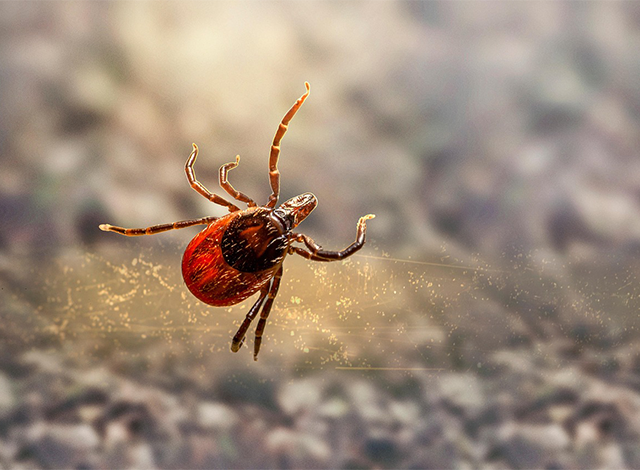LAURIE WEIR
Eastern Ontario’s tiniest bloodsuckers are back—and they’re not here for dance videos.
As temperatures climb above 4°C, blacklegged ticks in eastern Ontario are becoming active, and with them comes the risk of serious tick-borne illnesses.
“We want people to enjoy the benefits of being outdoors, whether they’re hiking, gardening or cleaning up yard debris,” said the Leeds, Grenville and Lanark District Health Unit. “But we also want residents to take the proper precautions to reduce their risk of tick bites and tick-borne diseases.”
Blacklegged ticks in the region may carry bacteria and microscopic organisms that cause Lyme disease, as well as anaplasmosis and babesiosis, two diseases that became reportable to the health unit in July 2023.
According to health untario, eastern Ontario is considered an established risk area for blacklegged ticks due to favourable conditions and ongoing surveillance. Across the province, Lyme disease has increased significantly in recent years, with more than 1,000 cases reported in Ontario in 2017 alone, a major jump from the previous five-year average of 313. Nationally, there were more than 5,200 reported cases of Lyme disease in 2024, according to preliminary data from the Public Health Agency of Canada.
“Even if you’ve had Lyme disease before, you can be re-infected,” the health unit added. “Ticks don’t care about your past medical history.”
Precautions That Could Save Your Health
The health unit encourages everyone to take the following steps to avoid infection:
- Dress in light-coloured clothing to help spot ticks more easily.
- Use insect repellents containing DEET or Icaridin—safe for use on skin and clothing.
- Wear clothing that contains a built-in tick repellent if possible.
- Put outdoor clothes into a hot dryer for several minutes to kill any ticks.
- Use a stiff-bristled brush on pant legs, sleeves, and footwear before going indoors.
- Shower and scrub well after outdoor activities to remove unattached ticks.
- Perform a full-body tick check. If possible, ask someone to check hard-to-see places. Don’t forget to check pets, too.
- Promptly remove attached ticks using fine-tipped tweezers or a tick twister.
A tick’s ability to transmit disease depends largely on how long it’s attached: Lyme disease and babesiosis typically require a tick to be attached for at least 24 hours, while anaplasmosis can be transmitted in as little as 12 hours.
“Fat ticks are particularly concerning,” the Health Unit noted. “They’ve likely been feeding for a longer period, which increases the risk of infection if the tick is carrying disease.”
What to Watch For
Lyme disease often begins with flu-like symptoms: fever, headache, fatigue, and joint pain, as well as a possible bull’s eye rash at the site of the bite. Symptoms may appear anywhere from three to 30 days after the bite.
Babesiosis and anaplasmosis can cause similar early symptoms, including fever, chills, headache, muscle pain, and fatigue. In severe cases, these illnesses may result in long-term complications or require hospitalization.
“If you’ve been bitten by a tick and it was attached for more than 12 hours, consult your health care provider. In the case of Lyme disease, some pharmacists may also provide preventative treatment in certain situations,” the health unit advised.
Tick specimens are no longer accepted by the health unit for disease testing, as ticks themselves are not used to diagnose illness. However, residents can submit photos of ticks for identification through eTick.ca.For more information, visit the Insect Bites and Diseases section at healthunit.org, call 1-800-660-5853, or email contact@healthunit.org. You can also follow @LGLHealthUnit on Facebook and X, or @lglhealthunit.z on Instagram.

















